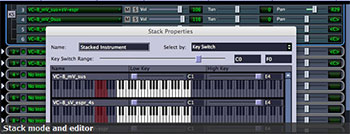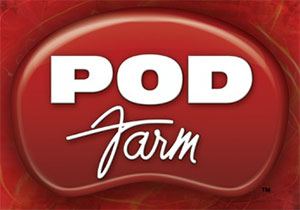If you use Spectrasonics Omnisphere and like to use synthesizers in your music, take a look at this new sound set. The Roland JP-8000 synthesizer was the first with the supersaw waveform, and contributed quite a bit to modern dance music becoming what it is today. This sound set is available for 9.90 EUR (about $13.50 USD).
You can read more about this sound set here: http://rekkerd.org/plughugger-releases-jp8k-legends-150-dance-sounds-for-spectrasonics-omnisphere/
virtual instruments
EVAC Sound Sample Pack Now Available
Sounds to Sample has released the EVAC sample pack. The $25 download comes with hundreds of samples, including drum loops, FX loops, OneShot samples, and more. EVAC, also known as Jeremy Goldstein, put his years of experience to work in composing this sample pack. Listen to the demos to see if these samples suit your needs.
You can get more information here: http://rekkerd.org/sounds-to-sample-presents-evac-sample-pack/
B.O.D. Version 2.0 From TSE Audio – New Freeware For Windows
This free software meets the same needs as a bass processing unit, but without the cords and cost. The software offers 32- and 64-bit support. It’s only available for Windows currently, but TSE Audio has plans for an OSX version that is coming soon. Get the perfect bass sound that you’ve been trying for without having to buy more gear; give this software a try!
You can read more about this software release here: http://rekkerd.org/tse-audio-releases-b-o-d-v2-0-bass-overdrive/
New Version Of G-Player Gigastudio Sample Player
 Several years ago I invested in an awesome software synthesizer program called Gigasampler, which later became Gigastudio. The program played sampled instruments via MIDI (see our article What is MIDI? A Big Help in Home Music Recording, That’s What for a review of what MIDI is). These virtual instruments (yup, see our article Home Recording Awesomeness – Virtual Instruments) sound extremely authentic because they are, in fact, recorded samples from the actual instruments. They are not synthesized. I had dozens of instrument samples for Gigastudio and used them often in my recordings. Other folks had hundreds or thousands of samples made to be compatible with Gigastudio (the files had the .gig extention). And then Gigastudio went away – Poof! Their parent company, Tascam, decided not to support or update or sell the program any longer. Gah! That meant that thousands of people were stuck with huge libraries of sounds and no player.
Several years ago I invested in an awesome software synthesizer program called Gigasampler, which later became Gigastudio. The program played sampled instruments via MIDI (see our article What is MIDI? A Big Help in Home Music Recording, That’s What for a review of what MIDI is). These virtual instruments (yup, see our article Home Recording Awesomeness – Virtual Instruments) sound extremely authentic because they are, in fact, recorded samples from the actual instruments. They are not synthesized. I had dozens of instrument samples for Gigastudio and used them often in my recordings. Other folks had hundreds or thousands of samples made to be compatible with Gigastudio (the files had the .gig extention). And then Gigastudio went away – Poof! Their parent company, Tascam, decided not to support or update or sell the program any longer. Gah! That meant that thousands of people were stuck with huge libraries of sounds and no player.
A few companies came along and offered a player capable of playing these Gigastudio instruments, and one of them is G-Player by soundLib. They now have a new version, G-Player version 2, which offers a free upgrade if you own the first version. If you buy it new, the cost is $149.
I’m going to grab my copy today.
Using Both Types of Guitar Amps In Your Recording – Real and Virtual

For over ten years now, there has been technology out there for playing electric guitar into virtual amps. These amplifier models were available in external hardware boxes at first, like the Line 6 Pod. But now there are hundreds of modeled amps available in software form with programs like the Line 6 POD Farm. In fact, you can hear a cover of the song That Thing You Do! (from the movie) – along with the video of lots of versions of me playing guitars and bass all going through modeled amps – that I recorded using the Line 6 POD Farm in this post – Cover of “That Thing You Do” – Record a Rock Song on Your Computer.
These modeled virtual guitar amplifiers sound fantastic, and to a lot of people (heck, most people I would guess), they sound like the real thing. But still, there are detractors – people who say they sound fake. They prefer the sound of real guitar amps recorded with real microphones. And let’s face it, it is often preferable just to plug your guitar into your amp and shred. And if your band is playing live, you’ll want to have the real amplifier – though it is getting more and more possible to play live with amp models using iPads and iPhones with products like the IK Multimedia iRig Amplitube. I did a review of that product, along with audio samples, in my post AmpliTube iRig by IK Multimedia.
But if you are recording a rock song and only have one amplifier, it may be beneficial to enhance the sonic palette of your electric guitar sound by adding some virtual amps, or vice versa, blending the two types of sound for a more interesting and rich mix. Graham Cochrane did a recent video showing you some ways to do this. See that video below: